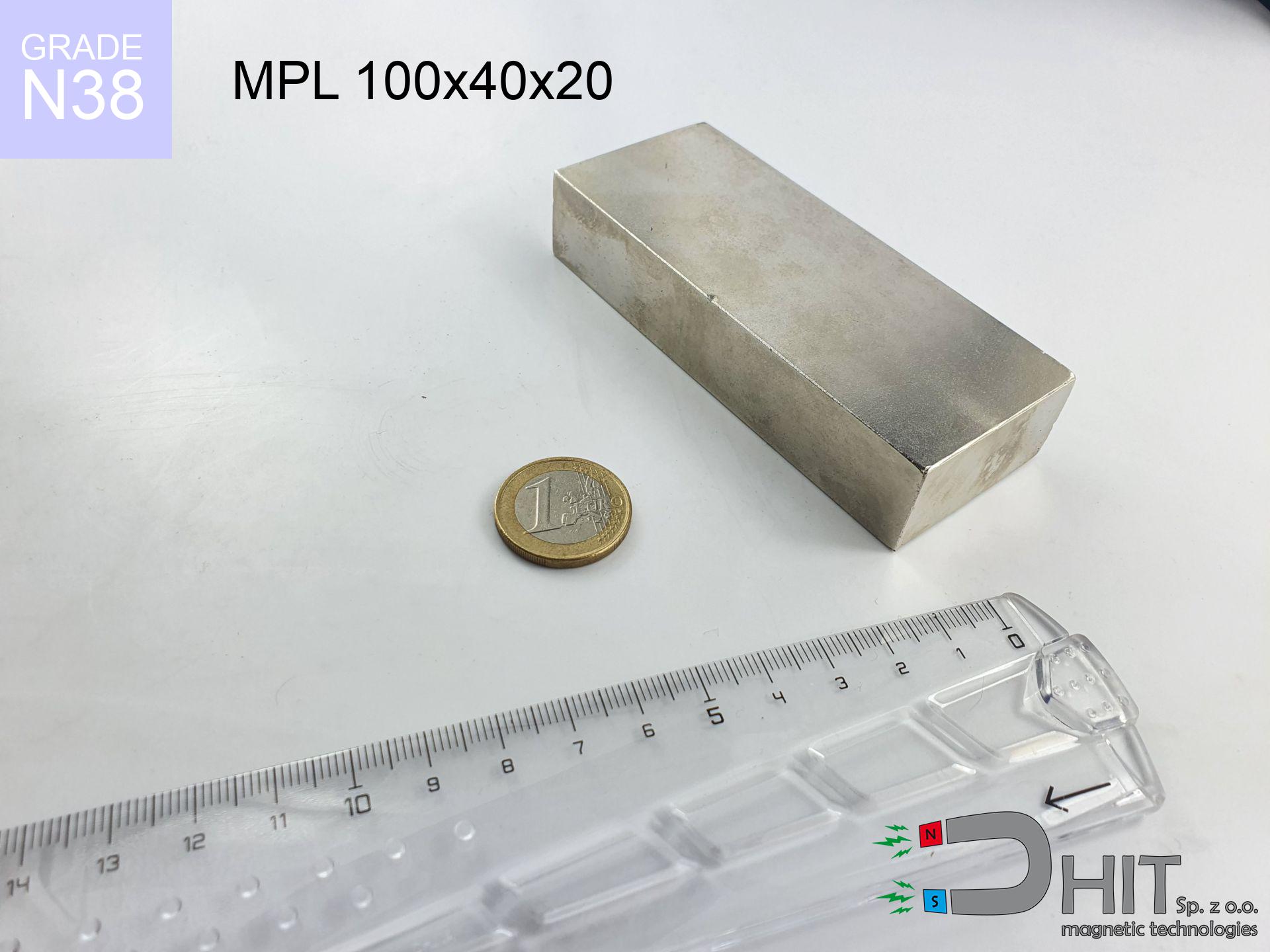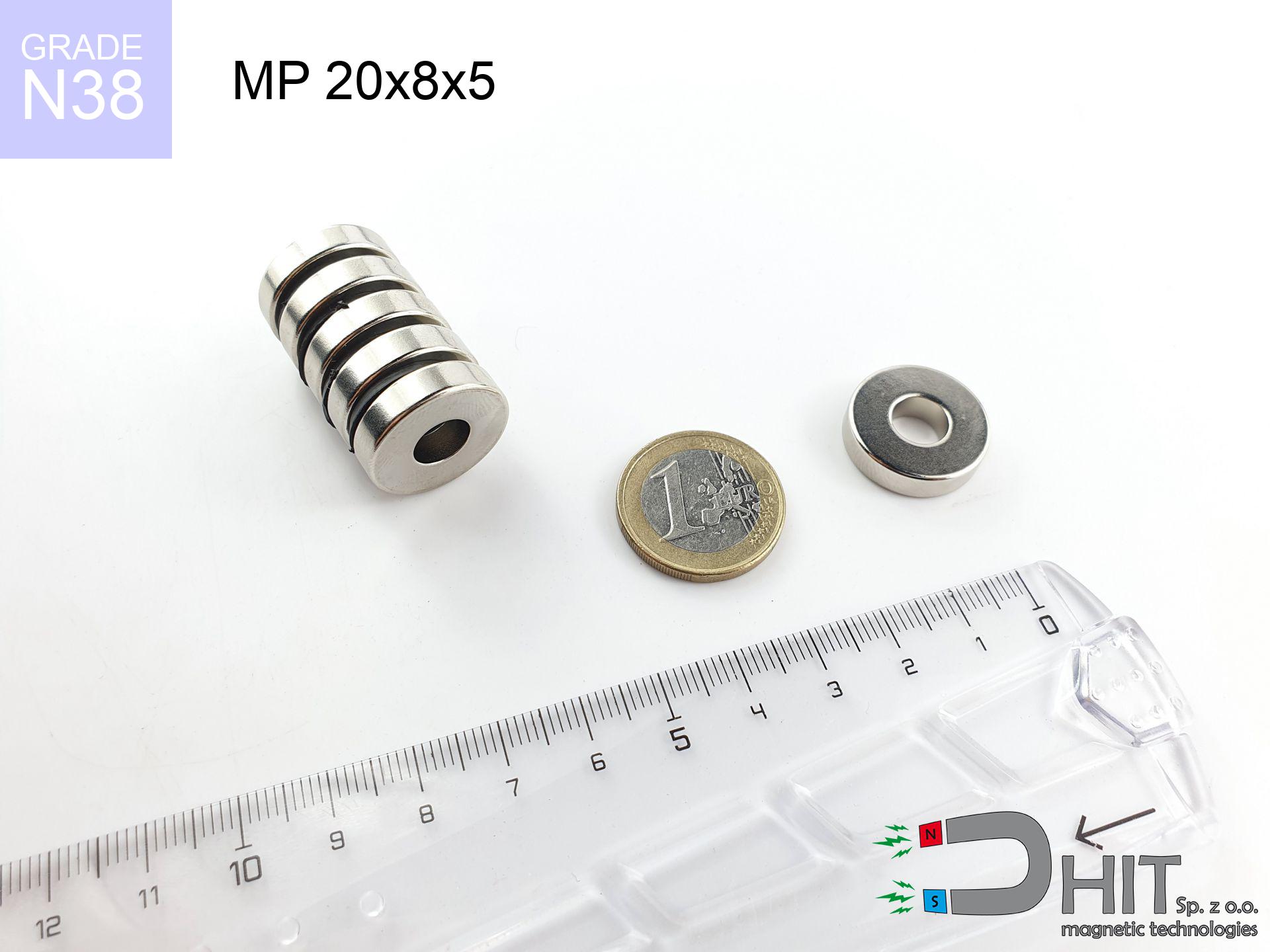UMT 12x20 orange / N38 - board holder
board holder
Catalog no 230282
GTIN/EAN: 5906301814344
Diameter Ø
12 mm [±1 mm]
Height
20 mm [±1 mm]
Weight
3.5 g
Coating
[NiCuNi] Nickel
1.894 ZŁ with VAT / pcs + price for transport
1.540 ZŁ net + 23% VAT / pcs
bulk discounts:
Need more?Not sure where to buy?
Pick up the phone and ask
+48 22 499 98 98
alternatively send us a note via
inquiry form
the contact page.
Specifications and shape of magnets can be checked on our
modular calculator.
Same-day processing for orders placed before 14:00.
UMT 12x20 orange / N38 - board holder
Specification / characteristics UMT 12x20 orange / N38 - board holder
| properties | values |
|---|---|
| Cat. no. | 230282 |
| GTIN/EAN | 5906301814344 |
| Production/Distribution | Dhit sp. z o.o. |
| Country of origin | Poland / China / Germany |
| Customs code | 85059029 |
| Diameter Ø | 12 mm [±1 mm] |
| Height | 20 mm [±1 mm] |
| Weight | 3.5 g |
| Coating | [NiCuNi] Nickel |
| Manufacturing Tolerance | ±1 mm |
Magnetic properties of material N38
| properties | values | units |
|---|---|---|
| remenance Br [min. - max.] ? | 12.2-12.6 | kGs |
| remenance Br [min. - max.] ? | 1220-1260 | mT |
| coercivity bHc ? | 10.8-11.5 | kOe |
| coercivity bHc ? | 860-915 | kA/m |
| actual internal force iHc | ≥ 12 | kOe |
| actual internal force iHc | ≥ 955 | kA/m |
| energy density [min. - max.] ? | 36-38 | BH max MGOe |
| energy density [min. - max.] ? | 287-303 | BH max KJ/m |
| max. temperature ? | ≤ 80 | °C |
Physical properties of sintered neodymium magnets Nd2Fe14B at 20°C
| properties | values | units |
|---|---|---|
| Vickers hardness | ≥550 | Hv |
| Density | ≥7.4 | g/cm3 |
| Curie Temperature TC | 312 - 380 | °C |
| Curie Temperature TF | 593 - 716 | °F |
| Specific resistance | 150 | μΩ⋅cm |
| Bending strength | 250 | MPa |
| Compressive strength | 1000~1100 | MPa |
| Thermal expansion parallel (∥) to orientation (M) | (3-4) x 10-6 | °C-1 |
| Thermal expansion perpendicular (⊥) to orientation (M) | -(1-3) x 10-6 | °C-1 |
| Young's modulus | 1.7 x 104 | kg/mm² |
Chemical composition
| iron (Fe) | 64% – 68% |
| neodymium (Nd) | 29% – 32% |
| boron (B) | 1.1% – 1.2% |
| dysprosium (Dy) | 0.5% – 2.0% |
| coating (Ni-Cu-Ni) | < 0.05% |
Ecology and recycling (GPSR)
| recyclability (EoL) | 100% |
| recycled raw materials | ~10% (pre-cons) |
| carbon footprint | low / zredukowany |
| waste code (EWC) | 16 02 16 |
Other offers
Pros and cons of neodymium magnets.
Strengths
- They have constant strength, and over nearly 10 years their attraction force decreases symbolically – ~1% (in testing),
- They are noted for resistance to demagnetization induced by presence of other magnetic fields,
- A magnet with a metallic gold surface has better aesthetics,
- The surface of neodymium magnets generates a maximum magnetic field – this is one of their assets,
- Made from properly selected components, these magnets show impressive resistance to high heat, enabling them to function (depending on their shape) at temperatures up to 230°C and above...
- Possibility of custom creating as well as optimizing to defined applications,
- Significant place in high-tech industry – they are commonly used in computer drives, electromotive mechanisms, diagnostic systems, also industrial machines.
- Compactness – despite small sizes they generate large force, making them ideal for precision applications
Disadvantages
- Brittleness is one of their disadvantages. Upon strong impact they can break. We recommend keeping them in a special holder, which not only protects them against impacts but also raises their durability
- We warn that neodymium magnets can lose their power at high temperatures. To prevent this, we advise our specialized [AH] magnets, which work effectively even at 230°C.
- Magnets exposed to a humid environment can rust. Therefore when using outdoors, we recommend using waterproof magnets made of rubber, plastic or other material resistant to moisture
- Limited possibility of making nuts in the magnet and complex forms - preferred is casing - magnetic holder.
- Possible danger resulting from small fragments of magnets can be dangerous, if swallowed, which becomes key in the aspect of protecting the youngest. Additionally, tiny parts of these magnets can disrupt the diagnostic process medical when they are in the body.
- Higher cost of purchase is a significant factor to consider compared to ceramic magnets, especially in budget applications
Lifting parameters
Magnetic strength at its maximum – what affects it?
- using a base made of low-carbon steel, functioning as a ideal flux conductor
- with a thickness of at least 10 mm
- with an polished contact surface
- under conditions of gap-free contact (metal-to-metal)
- during pulling in a direction perpendicular to the mounting surface
- at ambient temperature room level
Key elements affecting lifting force
- Clearance – the presence of any layer (rust, dirt, air) acts as an insulator, which lowers capacity steeply (even by 50% at 0.5 mm).
- Pull-off angle – remember that the magnet holds strongest perpendicularly. Under shear forces, the holding force drops significantly, often to levels of 20-30% of the nominal value.
- Substrate thickness – for full efficiency, the steel must be adequately massive. Paper-thin metal restricts the lifting capacity (the magnet "punches through" it).
- Chemical composition of the base – mild steel attracts best. Higher carbon content decrease magnetic permeability and lifting capacity.
- Plate texture – ground elements guarantee perfect abutment, which increases field saturation. Uneven metal weaken the grip.
- Temperature – temperature increase causes a temporary drop of induction. It is worth remembering the thermal limit for a given model.
Holding force was tested on a smooth steel plate of 20 mm thickness, when a perpendicular force was applied, however under shearing force the holding force is lower. Additionally, even a small distance between the magnet and the plate decreases the load capacity.
This is not a toy
Product intended for adults. Small elements pose a choking risk, causing intestinal necrosis. Store away from children and animals.
Keep away from electronics
Remember: rare earth magnets generate a field that interferes with precision electronics. Maintain a safe distance from your phone, device, and GPS.
Safe operation
Handle with care. Neodymium magnets attract from a distance and connect with massive power, often faster than you can react.
Nickel coating and allergies
Certain individuals have a sensitization to nickel, which is the common plating for neodymium magnets. Frequent touching may cause an allergic reaction. It is best to use protective gloves.
Heat warning
Watch the temperature. Exposing the magnet above 80 degrees Celsius will permanently weaken its magnetic structure and pulling force.
Do not drill into magnets
Drilling and cutting of NdFeB material poses a fire hazard. Neodymium dust oxidizes rapidly with oxygen and is hard to extinguish.
Danger to pacemakers
Warning for patients: Strong magnetic fields disrupt medical devices. Maintain minimum 30 cm distance or request help to handle the magnets.
Protective goggles
Beware of splinters. Magnets can explode upon violent connection, ejecting sharp fragments into the air. We recommend safety glasses.
Threat to electronics
Avoid bringing magnets near a wallet, computer, or screen. The magnetism can permanently damage these devices and erase data from cards.
Serious injuries
Danger of trauma: The pulling power is so immense that it can cause hematomas, pinching, and broken bones. Protective gloves are recommended.








